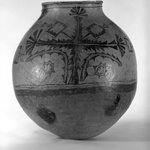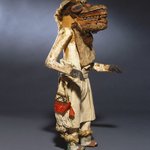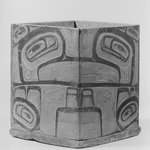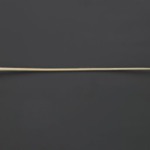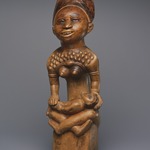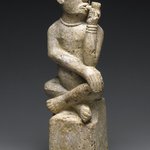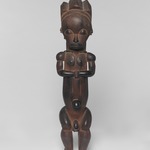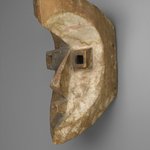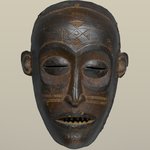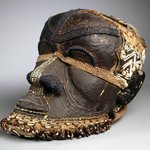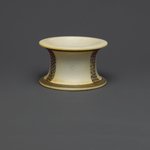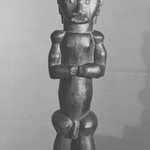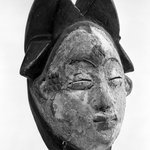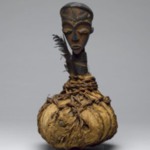

Punu. Mask for the Okuyi Society (Mukudj), late 19th century. Wood, pigment, 9 7/8 x 7 x 6in. (25.1 x 17.8 x 15.2cm). Brooklyn Museum, Museum Expedition 1922, Robert B. Woodward Memorial Fund, 22.225. Creative Commons-BY (Photo: Brooklyn Museum, 22.225_SL1_edited_version.jpg)
Mask for the Okuyi Society (Mukudj)
Arts of Africa
On View: Special Exhibitions, Egyptian Galleries, 3rd Floor
In the past mukudj masks were danced on stilts in masquerades during funeral celebrations. The mask’s white coloring symbolizes peace, the afterlife, and the spirits of the dead—though today its performances are chiefly for entertainment.
CULTURE
Punu
MEDIUM
Wood, pigment
DATES
late 19th century
DIMENSIONS
9 7/8 x 7 x 6in. (25.1 x 17.8 x 15.2cm) (show scale)



COLLECTIONS
Arts of Africa
ACCESSION NUMBER
22.225
CREDIT LINE
Museum Expedition 1922, Robert B. Woodward Memorial Fund
PROVENANCE
Prior to 1922, provenance not yet documented; by 1922, acquired by François Poncelet of Brussels, Belgium; 1922, purchased in Brussels from François Poncelet by Stewart Culin for the Brooklyn Museum.
Provenance FAQ
CATALOGUE DESCRIPTION
Light wooden dance mask, carved in the form of a human face with high headdress painted black in six parallel, curved ridges going from front to back. Face colored white and decorated with three groups of keloids: between brows, at outer edges of eyes and brows, and on temples. Slit eyes, holes at either side for attachment. Used by a female secret society.
Condition: Surface wear; missing pigment. Holes in face at lower left and in one eye.
EXHIBITIONS
MUSEUM LOCATION
This item is on view in Special Exhibitions, Egyptian Galleries, 3rd Floor
CAPTION
Punu. Mask for the Okuyi Society (Mukudj), late 19th century. Wood, pigment, 9 7/8 x 7 x 6in. (25.1 x 17.8 x 15.2cm). Brooklyn Museum, Museum Expedition 1922, Robert B. Woodward Memorial Fund, 22.225. Creative Commons-BY (Photo: Brooklyn Museum, 22.225_SL1_edited_version.jpg)
IMAGE
overall, 22.225_SL1_edited_version.jpg. Brooklyn Museum photograph
"CUR" at the beginning of an image file name means that the image was created by a curatorial staff member. These study images may be digital point-and-shoot photographs, when we don\'t yet have high-quality studio photography, or they may be scans of older negatives, slides, or photographic prints, providing historical documentation of the object.
RIGHTS STATEMENT
Creative Commons-BY
You may download and use Brooklyn Museum images of this three-dimensional work in accordance with a Creative Commons license. Fair use, as understood under the United States Copyright Act, may also apply.
Please include caption information from this page and credit the Brooklyn Museum. If you need a high resolution file, please fill out our online application form (charges apply).
For further information about copyright, we recommend resources at the United States Library of Congress, Cornell University, Copyright and Cultural Institutions: Guidelines for U.S. Libraries, Archives, and Museums, and Copyright Watch.
For more information about the Museum's rights project, including how rights types are assigned, please see our blog posts on copyright.
If you have any information regarding this work and rights to it, please contact copyright@brooklynmuseum.org.
RECORD COMPLETENESS
Not every record you will find here is complete. More information is available for some works than for others, and some entries have been updated more recently. Records are frequently reviewed and revised, and we welcome any additional information you might have.







